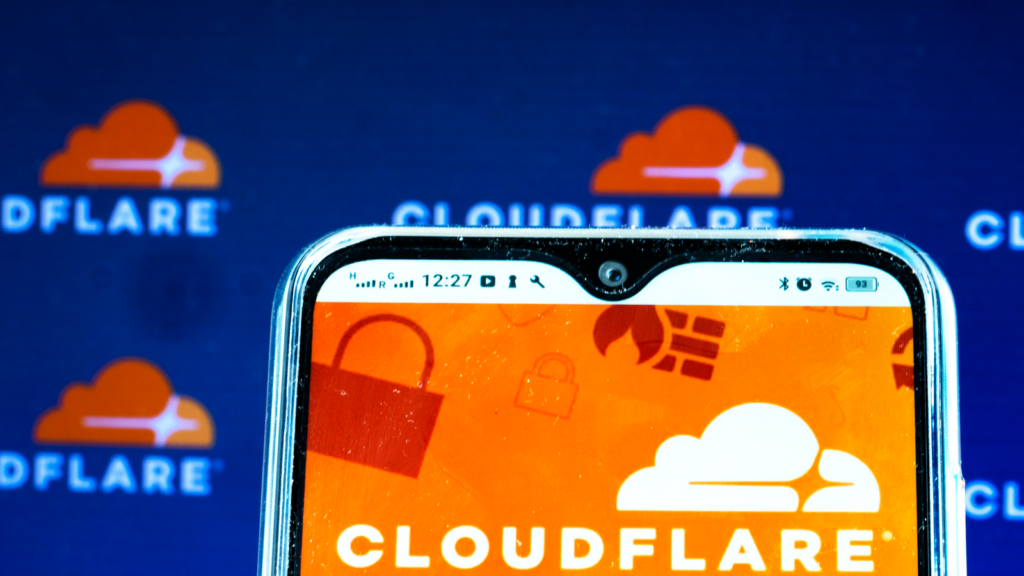Cloudflare (NYSE:NET) helps make everything online secure fast and reliable. The company does its best to eliminate fears of cyberattacks, boost productivity, and improve remote working for its clients. This is a very strong economic moat for NET stock but, right now, it isn’t enough to make it worth buying.

Cloudflare gives businesses an edge to achieve strategic decisions by making digital tasks safer and faster. By developing a cloud network that is connected globally the technology, the company is building a better internet. With technology advancements moving fast and Web 3.0 on the horizon, there will be increased demand for Cloudflare’s services to support critical industries. All together, this definitely builds a bull case for the cloud company.
That’s at least the start of a bull case for Cloudflare but there’s a valid bear case too. Both cases have their own distinct arguments. Decide on which side has the most plausible scenario and choose your side based on facts, not emotions.
Cloudflare: The Bullish Scenario
The global cloud services provider has delivered a third quarter 2021 earnings report that showed strength in several key metrics.
For the three months ended September 30, 2021, Cloudflare reported a 51% increase in revenue compared to the same period one year ago. As well as an increase to large customers with more than $100,000 annualized revenue of approximately 71% to 1,260 from 736 in Q3 2020.
The compound annual growth rate (CAGR) for total revenue from the year 2018 until the end of September 2021 was 50%. And for just large customers it was 67% from Q3 2019. Investors with a preference for growth stocks will probably like Cloudflare.
Their scalability of business is also impressive with more than 76 billion cyber threats blocked daily and more than 132,000 total paying customers. I also like the fact that the firm generates 47% of its revenue outside of the U.S. market. Too large of a concentration in a large market is too risky and may be subject to stiff competition.
Cloudflare’s customer base in more than 175 countries is a clear signal of a very successful implementation of a scalable business plan. Cloudflare considers the four main cores of its competitive advantage to be: shared intelligence, network scale, ease of use, and no trade-offs regarding security and performance.
Their strategy for growth is also coincidentally has four key pillars. Starting from the most obvious one which is acquiring more customers, to expanding relationships with existing customers, investing to develop new products, and extending the serverless platform strategy.
Areas of future growth considered to be incremental, which is very good news for any type of business include the Internet of Things (IoT), 5G technology, and consumer preferences and trends.
Cloudflare: The Bearish Scenario
In a nutshell, the main argument for being bearish on NET stock is its lofty valuation. Before elaborating more on valuation, it is important to mention that Cloudflare in Q3 2021 reported lower figures as a percentage of revenue for sales and marketing, research and development, and general and administrative expenses respectively compared to 2020.
These figures above are important as they are inputs to calculate the operating income. The expectation that operating income could be improved in Q3 2021 is logical. Unfortunately for the nine months ended September 30, 2021, Cloudflare reported a loss from operations (of $86.62 million) higher than ($82.02 million) for the nine months ended on September 2020.
Cloudflare reported also a widening net loss of $182.8 million for the first nine months of 2021 compared to a loss of only $85.34 million for the same period a year ago. That’s an over 110% increase.
Other important key risks are a stock dilution as total shares outstanding grew by 4.7% in the past year and a cash burn problem.
Turning to valuation two important financial metrics are Price / Sales and Price / Cash Flow ratios. Cloudflare has a Price / Sales (FWD) ratio of 39.82 and a Price / Cash Flow (FWD) ratio of 727.91. The Information Technology sector has median values of 3.60 for Price/Sales and 20.73 for Price / Cash Flow respectively. I consider this very large premium for NET stock to not be justified.
I Side With the Bears on Net Stock
Investors need other factors than just revenue. Like profits and and an attractive valuation and Cloudflare clearly lacks these factors. Cloudflare is in the category of companies with great products but not great stocks.
Cloudflare stock is already having losses of approximately 39% year-to-date. It is still too expensive and should strive to deliver profits soon as in 2022 value stocks have all the odds in their favor and growth stocks that trade at elevated prices should have a very rocky year.
Investors who want to buy NET stock should be very patient and prefer selloffs. The reality is that the NET stock is too rich now. Remember: buying an overvalued stock for a small discount hardly mitigates the total risk.
On the date of publication, Stavros Georgiadis, CFA did not have (either directly or indirectly) any positions in the securities mentioned in this article. The opinions expressed in this article are those of the writer, subject to the InvestorPlace.com Publishing Guidelines.
Stavros Georgiadis is a CFA charter holder, an Equity Research Analyst, and an Economist. He focuses on U.S. stocks and has his own stock market blog at thestockmarketontheinternet.com. He has written in the past various articles for other publications and can be reached on Twitter and on LinkedIn.
